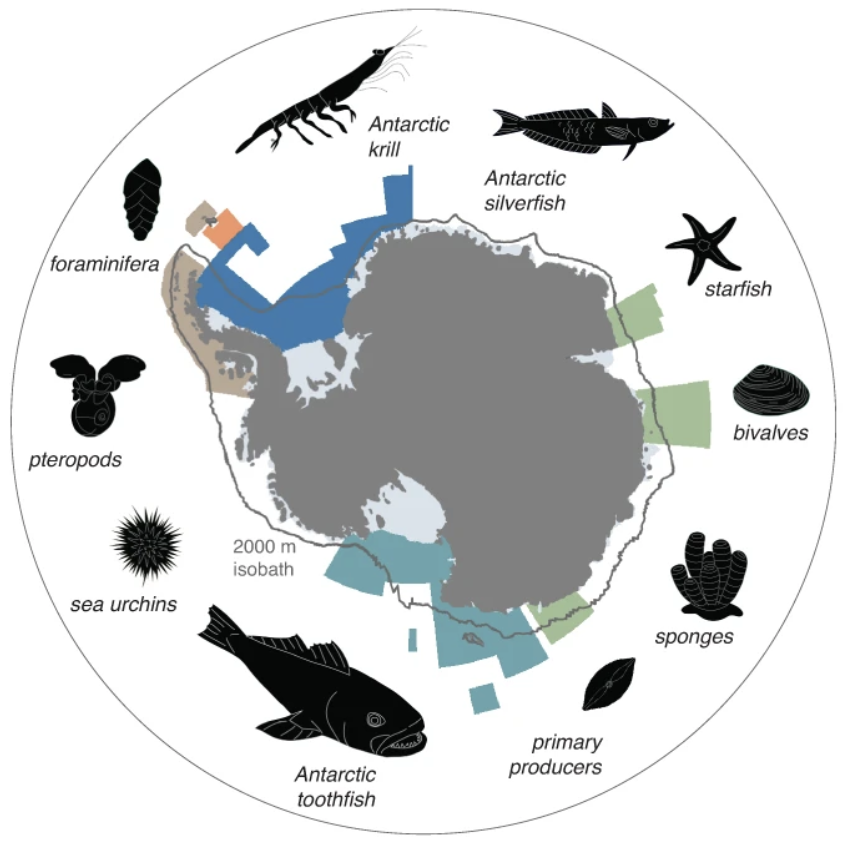The research paper “Severe 21st-century ocean acidification in Antarctic Marine Protected Areas” by Cara Nissen et al., focuses on the future of ocean acidification (OA) in Antarctic Marine Protected Areas (MPAs) under different emission scenarios using a high-resolution ocean-sea ice-biogeochemistry model. The study highlights severe potential declines in pH and the consequences for marine biodiversity.

About This Map
This map of Antarctica featured in the study illustrates the locations of established and proposed Marine Protected Areas (MPAs) around the continent. It also highlights key marine species that may be negatively impacted by ocean acidification, with their positions around the map representing their typical habitats within these MPAs.
Key Takeaways:
- Antarctic Vulnerability: Antarctic coastal waters, including several MPAs, are under threat from ocean acidification due to increased anthropogenic carbon uptake. These waters support exceptional biodiversity, making them critical to preserve.
- Emission Scenarios and OA Projections: The study examines four emission scenarios, projecting significant pH declines by 2100, with the highest reductions under high-emission scenarios. This results in widespread aragonite undersaturation, affecting marine organisms that rely on calcium carbonate structures.
- Biogeochemical Changes: Antarctic waters are highly sensitive to OA due to cold temperatures and upwelling of carbon-rich deep waters. The study highlights the enhanced vertical mixing of anthropogenic carbon on continental shelves, exacerbating local OA.
- Impact on Marine Life: Various marine organisms, including primary producers and shell-forming species, are expected to face severe impacts from OA. The study notes potential declines in populations and shifts in community structures due to altered physiological processes and ecosystem dynamics.
- Conservation Implications: The research supports the expansion of MPAs as a strategy to mitigate OA impacts and preserve marine biodiversity. It calls for strong emission-reduction efforts and enhanced management strategies to alleviate pressures on these ecosystems.
- Modeling Approach: Utilizes a sophisticated modeling approach that integrates realistic ice-shelf geometry and high-resolution data, providing detailed projections that highlight the urgent need for climate action to protect Antarctic marine environments.